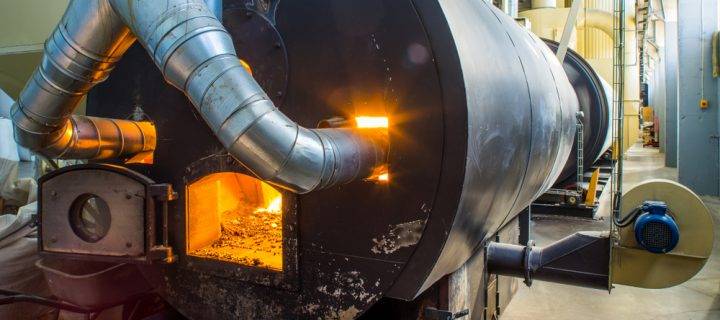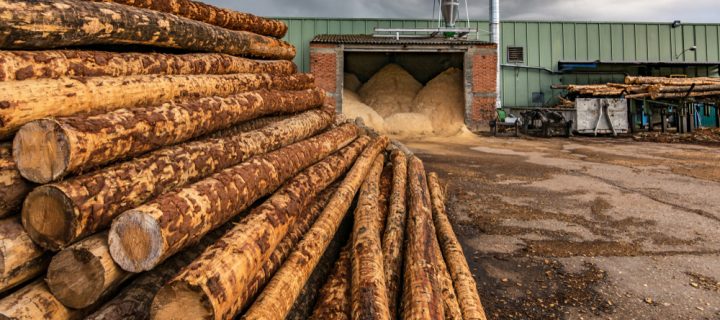It is completely up to you how you implement any heating system (such as a biomass fuel boiler) in your home or business, but there are particular integrated systems that help to get the best out of them. Biomass boilers are one of the best renewable heating systems and are able to provide a reliable heating source all year round. It is important to clarify the uses of this system with regards to your heat demands. For our latest post, P.H Winterton will compare the different biomass fuel heating systems. Comparing Biomass Fuel Heating Systems Part of Integrated/Hybrid Heating System – A great way to guarantee powerful heating, is to implement an integrated or hybrid heating system. This allows for the use of a traditional boiler alongside a renewable source which creates a synergy for the best heating possible. The traditional heating acts as a backup if the renewable heating source is underperforming, meaning you can switch between them for optimal warmth. Biomass boilers are not frequently used this way, but if it is possible in the property it could be an option. Using with Another Renewable Heating System – This a great way to be fossil fuel-free, with a boiler working with a system such as an air-source heat pump to have fully renewable heating sources around your home. This dual system will make use of both sources, switching between whichever is most useful. Standalone Heating System – One big advantage of biomass boilers is that they are incredibly useful on their own, creating enough heat all year round without any real drop off during winter. When compared to other renewable heating systems this is crucial. It is possible that in many cases to completely replace the conventional system already in place and use this replacement and still have sufficient heating. You will also be lowering your environmental impact and can earn money back through the Renewable Heating Initiative (RHI). It is hard to argue against biomass boilers, as they are arguably the best renewable heating system of recent years. There are plenty of benefits such as carbon neutral heating and cheaper running costs when compared to standard boilers. If you are thinking about making the switch to...
Read Moreabout Can Biomass Fuel Boilers Be Used on their Own?If you are considering a biomass fuel boiler, you will probably know that it will need more maintenance than a regular gas boiler. A gas boiler needs to be assessed by an engineer every year, but a biomass boiler needs more regular care. Although most of the tasks are pretty straight forward, it is worth considering before committing to the extra time and effort. P.H Winterton and Son are of the Government-approved biomass suppliers, with our wood pellets used by customers all over the country. For this blog, we will talk you through the maintenance of biomass boilers. Attention to Detail Needed for Biomass Fuel Boilers The amount of attention needed for your boiler will ultimately depend on the model and type of fuel you use. Wood logs, chips and pellets all burn differently and create varying amounts of waste. Some high-end biomass boilers have extra features which mean that they can look after themselves (to an extent). To keep the system running efficiently and to make sure you have a decent return on investment, it is crucial to provide sufficient maintenance. Here are some points to consider – Daily – A visual inspection and cleaning of any components where needed Weekly – Check the ash level and empty if needed and check gear motors for oil leaks Monthly – Scrape the combustion chamber, removing any bad ash and checking the grate Every 3 Months – Wipe the flue gas sensor and clean the lambda probe and check the grate Every 6 Months – Check and clean the flue gas return, inspect the operational drives, check the motors, clean the heat exchangers and clean the combustion chamber Annually – This check will usually be carried out by your installer. Tasks include multiple checks plus cleaning the flue and greasing the bearings Get in Touch for More Information If you have any questions about biomass fuel boilers, please do not hesitate to contact P.H Winterton today. We are the leading provider of equine bedding for customers across Staffordshire, Cheshire and...
Read Moreabout Understanding Biomass Fuel Boiler MaintenanceWith sustainable fuels becoming more and more prevalent, it’s the perfect time to consider the benefits of using biomass fuel. Last week, we saw the government announce that algae, alcohol and household waste would power RAF fighter jets under the Ministry of Defence’s plan to slash carbon emissions. Along with the government’s plans to ban petrol and diesel cars by 2030, it seems that alternative fuel sources are the future. Therefore, we thought that we would look at five benefits of biofuel in our latest blog post. Less Greenhouse Gases It’s the obvious one, we know. However, it’s also one of the most important reasons that people tend to switch. Even though biofuels still emit some greenhouse gases, it’s much less than your traditional fuels. In fact, thanks to photosynthesis, biomass fuels only release the same amount of carbon into the atmosphere as was absorbed by plants in the course of their life cycle. This means that it is considered as CO2 neutral. If there are less greenhouse gases in the air, then we could slow the effects of global warming. Renewable Source of Energy One of the most important factors surrounding biomass fuel is that it’s a renewable source. This means that we can replace it as we use it, leading to an endless supply. Farmers can dedicate land to growing crops that will be intended for use as biofuel. This is a much better alternative to draining the Earth of it’s oils and natural gases which are all non-renewable sources of energy. More Cost Effective A lot of this comes down to the process of sourcing and producing the fuel. For fossil fuels, sourcing them requires drills, gas pipelines and fuel collection. However, the machinery needed to produce biomass fuel is much less expensive. These overheads are naturally reflected in the price of the product. Less Waste Polluting The Environment By giving this waste another purpose, you’re preventing it from being dumped in a landfill somewhere. Littering and the usage of non-degradable materials is unfortunately rife. Therefore, where there is an opportunity to re-use other materials, we should definitely try to. By working with P.H. Winterton and Son to get sawmill waste collections, you’re helping to save...
Read Moreabout Five Benefits Of Switching to Biomass FuelFor many years P.H Winterton and Son have been providing the finest quality of wood chip pellets which can be used as the sustainable energy source – biomass fuel. We first started producing biomass energy because joineries were struggling to dispose of surplus wood, and because of this, we were able to market this as a product and alternate energy source. Because of their low energy densities, biomass fuels have become one of our most popular products. We only use grade A wood residue from sawmill waste collections which can be burnt in a boiler for industrial heating and electricity. The wood pellets can also be used in specific stoves for the heating of homes. Why Should I Use a Pellet Stove? Here are six advantages of using a pellet stove – 1. Temperature Adjustment, Programming and Remote Control – Some models of pellet stove allow you to adjust the temperature with a remote control or a room thermostat. Other models can be programmed or operated daily or monthly via text message or a mobile app. The pellet stove will start to burn and go out without you having to do anything, depending on the programme you choose. 2. Up to 90% Efficiency – Pellet stoves can be up to 90% efficient, meaning only 10% of the energy generated by the wood pellets (biomass fuel) is lost in the chimney. 3. No Special Chimney Required – A pellet stove that is equipped with an active smoke extraction system, meaning there is no need for a special chimney because the combustion gases can be blown into an existing chimney. The smoke can also be extracted by using an ordinary thin tube that runs horizontally through an outer wall, even when it is kinked. 4. Autonomy from 12-36 Hours – The pellet reserve in your wood pellet stove has an autonomy of roughly 12 hours at full power. This means your stove must be filled manually once or twice a day. 5. Convenient and Cheap Fuel – P.H Winterton’s biomass fuel is extremely cost-effective compared with other fuels. The consumption of pellets depends on the size and insulation of the room to be heated, on the heating time plus the desired...
Read Moreabout The Importance of Biomass Fuel Wood PelletsRecent research from specialists Enviva has shown how the use of biomass fuel and wood pellet electricity will impact on the environment. The study helped to explain the carbon impact of wood pellet energy plus its sustainability. As part of the research, it was revealed the greenhouse gas impacts of wood pellets plus their emissions from the wood pellet supply chain. They also compared the performance of electricity generated using wood pellets against other fuels such as coal and natural gas. For this blog, P.H Winterton is going to look at the Enviva report in greater detail and explain the many reasons to use biomass fuel. Why Biomass Fuel Is More Important Than Ever For steady-state working forests, you will get the same net climate impact result, no matter the sort of assumptions used for carbon accounting. Crediting biogenic carbon uptake before combustion will present the same result for working forests plus the carbon-debt accounting approach. This is assigned at the time of combustion and will be repaid as the forest regrows. Renewable, baseload bioenergy enables the renewable electric grid. The carbon benefits of good biomass fuel are clear. The report explains that wood sourced sustainably is a by-product traditional timber harvest where the land returns to forested use. Biomass is essentially a natural storage vessel for energy from the sun with trees from working forests continuously recycling carbon from the atmosphere to trees and back. In contrast, fossil fuels represent a one-way trip for carbon from geologic storage to the atmosphere. As long as the requirements for quality biomass are met, greenhouse gas emission can be mitigated by substituting bioenergy for fossil fuels. Get in Touch for More Information If you would like to know more about biomass fuel, please do not hesitate to contact P.H Winterton and Son today. We are proud to be part of the UK government Biomass Supplier List; meaning you will always get the finest wood pellets from...
Read Moreabout How Biomass Fuel Impacts the EnvironmentWood waste is the final unwanted product from sawmills plus lumber-jacking and branch pruning. If you are unsure what to do with your unwanted excess timber, don’t worry as P.H Winterton offer a sawmill waste collection service. Industries that contribute to the creation of wood waste include furniture, sawmill, pulp and paper, plywood mills and particleboard mills. For this blog, we are going to explain the different types of wood waste and how it should be stored. The Different Types of Wood Waste There are four main types of wood waste, which are problem wood waste, used wood, scrap wood plus natural wood waste. Examples of problem wood waste are unwanted laminated, wood waste with preservative agents is a blend of problem wood waste and regular wood. Used wood waste consists of deserted wooden building portions, wooden furniture and wood waste from materials like colour pallets. Scrap wood waste is produced in workshops by carpenters, furniture factories, construction sites plus sawmills. Natural wood waste is leftover sawdust and remaining wood pieces from logging activities. Best Storage Methods for Wood Waste Waste collecting bins are pile-up stations of different sizes, shapes and materials which help reduce the spread of litter. Different types of waste collecting include localised containers, centralised bin stations, waste transfer carts or transfer balers and waste yard dumpsters. Localised containers are also known as desk-side bins and are individual refuse bins whose purpose is to increase the efficiency of waste handling. They encourage people to keep their rubbish organised and promotes the recycling of wood waste. Centralised bin stations are placed in strategic points and are the recipients of waste that are assembled from the localised containers. Most furniture workshops have this type of bin in their hallways and corridors which stores wood waste from employees’ work stations. Their main purpose is to receive refuse from centralised stations and move or cut them if it is a transfer baler. They are large containers that carry more waste and are more economical when compared to buying a number of high traffic containers. The refuse yard dumpster is the final designated point to store large amounts of waste and are mostly huge and receive tonnes of wood waste from...
Read Moreabout Preparing for Sawmill Waste Collection



